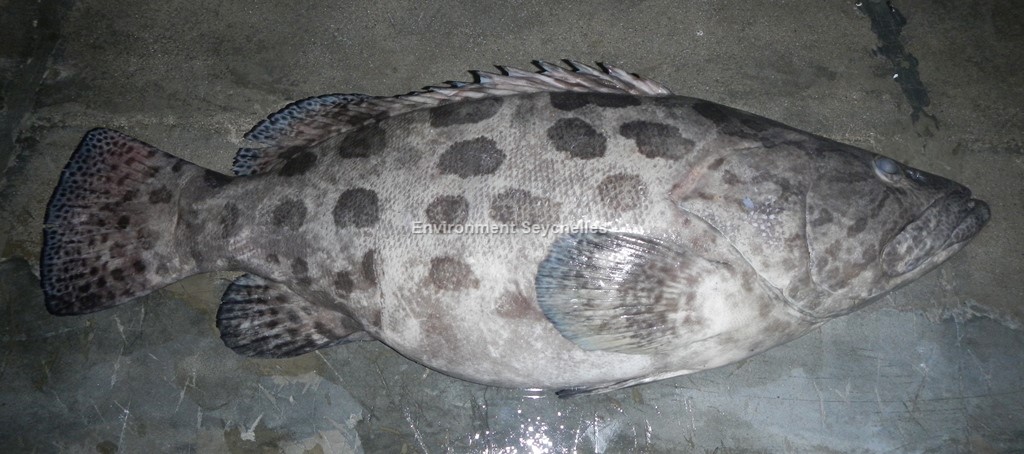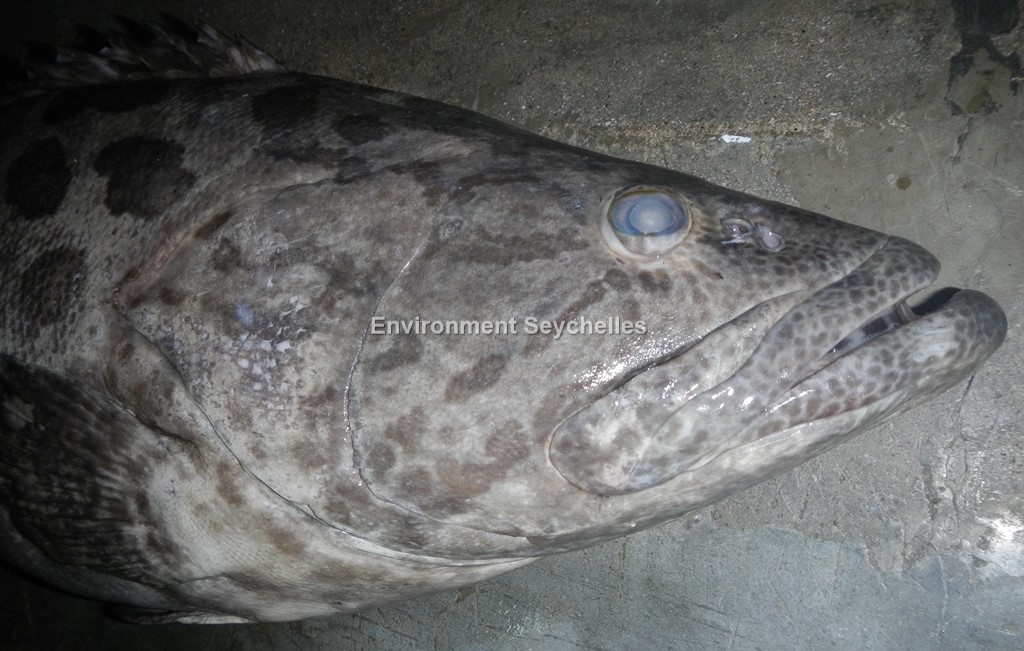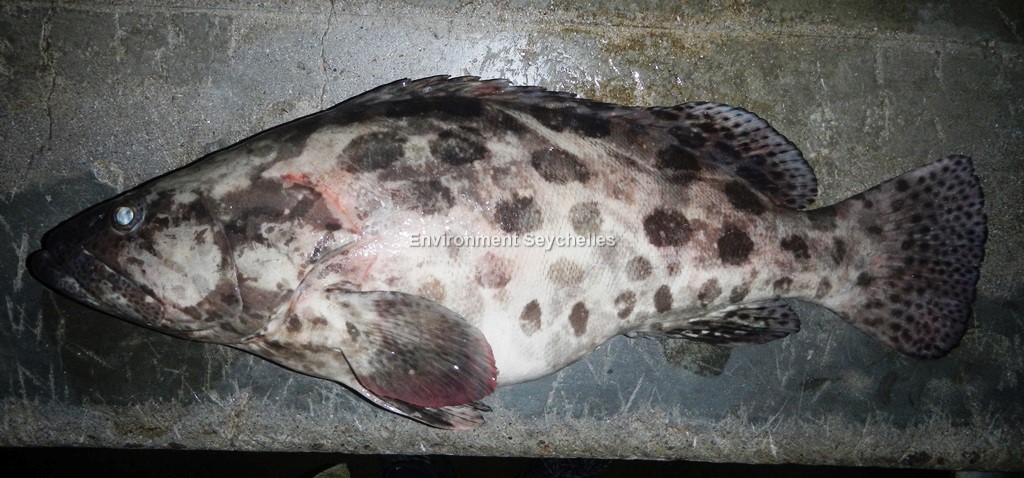Description:
Dorsal spines: 11; Dorsal rays: 14-15; Anal spines: 3; Anal rays: 8.
Large to very large, robust to full-bodied grouper. Dorsal head profile straight, upper edge of operculum almost straight. Posterior and anterior
nostrils are sub- equal. Maxilla reaches to or beyond vertical at rear edge of the eye. Interspinous dorsal fin membranes distinctly incised. Caudal fin rounded.
Colour. Pale brown to grey grouper with large dark widely spaced spots and blotches on the body. Colour becomes darker with size and the blotches less distinct,
large adults may be nearly black. Head with small dark brown spots or streaks radiating posteriorly from the eye. Small dark spots on the fins becoming smaller distally.
Size:
Maturity: Lm unknown. Range unknown 99-? cm. Max Length: 200 cm TL.
Habitat and Ecology:
Territorial, reef associated species mainly found in deep reef channels, seamounts (depth 10-400 m). Juveniles may be found in tide pools and occupying coastal shallow
water caves and crevices. Juveniles migrate with growth from nursery coastal reefs to deeper offshore reefs. Individuals are aggressively territorial and exhibit high
site fidelity. Feeds on a variety of fishes, including skates and invertebrates. May form spawning aggregations.
Grandcourt (2005) examined otoliths from individuals ranging from 72.3 - 128.4 cm total length and recorded a maximum age of 26 years. The growth curve calculated in
that study estimates that an individual two metres total length (the maximum recorded length of the species) would be roughly 40 years old. It is a slow-growing species
with a natural mortality rate estimated as 0.13 yr-1.
Fishery Status:
This species is not protected or subject to fishery regulations. Recorded as common about the coast of the granitic islands by Travis in the 1950s and still classified
as a species of economic importance in the 1980s by SFA. It is a now a very rare catch in the artisanal fishery. It may be caught more often by sports fishers fishing
deep at the bordaz (edge) of the Mahe Plateau.
Notes:
References:
Bray. D.J. Epinephelus tukula in Fishes of Australia, http://fishesofaustralia.net.au/home/species/3850 (16/03/19).
Craig, M.T. et al. (2011). Groupers of the World - a field and market guide. NISC (Pty) Ltd, South Africa. ISBN: 978-1-920033-11-8
Froese, R. & D. Pauly. (Eds.) (2019). FishBase. https://www.fishbase.se/summary/5525 (15/03/19).
Grandcourt, E.M. (2005). Demographic characteristics of selected epinepheline groupers (Family: Serranidae; Subfamily: Epinephelinae) from Aldabra Atoll, Seychelles.
Atoll Research Bulletin 539: 201-216.
Pollard, D.A. et al. (2018). Epinephelus tukula. The IUCN Red List 2018: http://dx.doi.org/10.2305/IUCN.UK.2018-2.RLTS.T132773A100561780.en. (15/03/19).
Citation:
Nevill, J.E.G. & Mason-Parker, C. (2019). Epinephleus tukula, Potato Bass. www.seatizens.sc https://seatizens.sc/species/epinephelus-tukula-morgans-1959/ (edited 07/08/22).




There are no comments